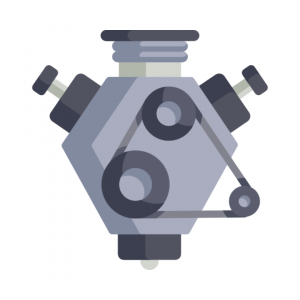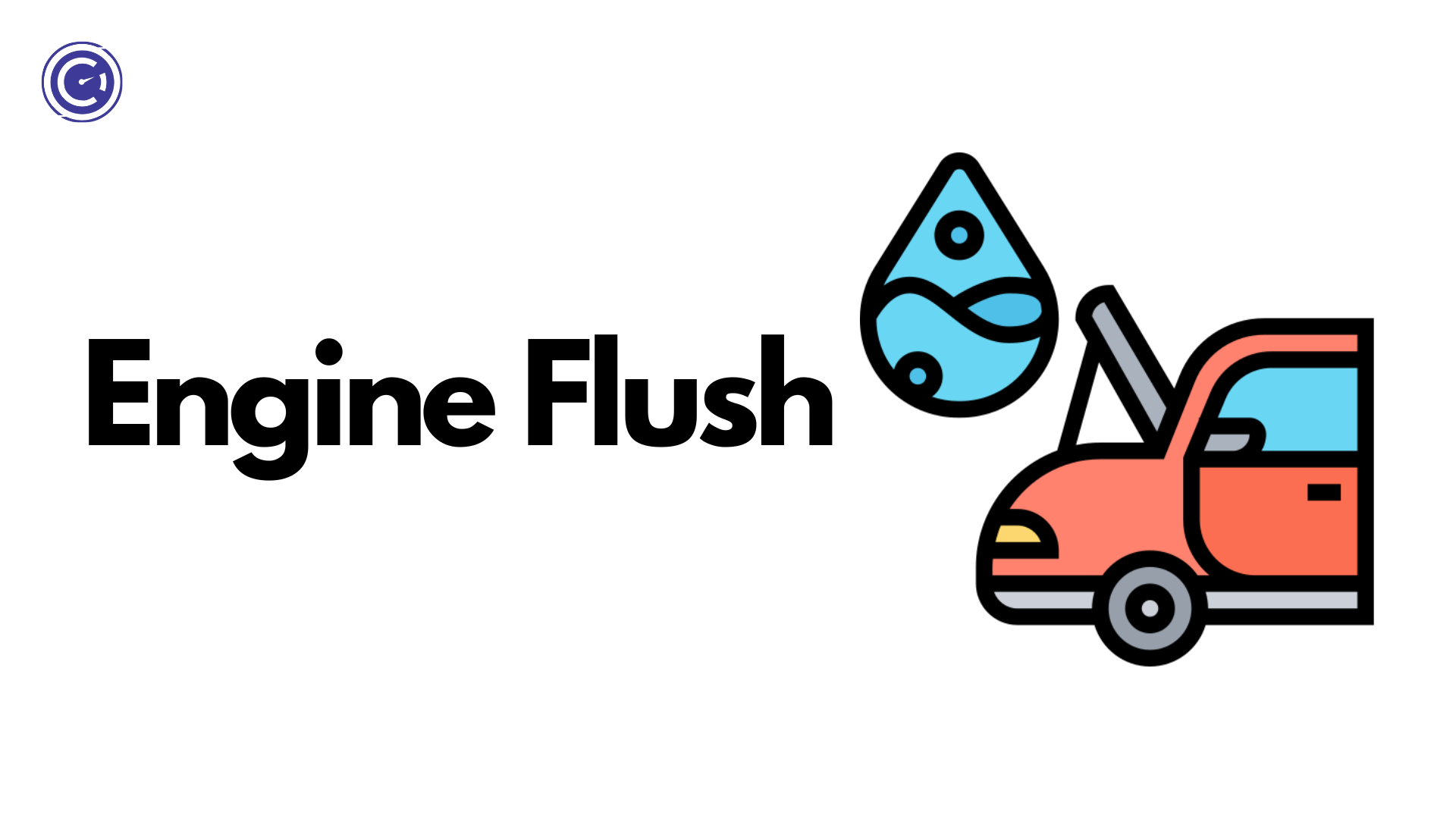Table of Contents
I. Introduction
A. Importance of engine flush
Keeping your vehicle’s engine in optimal condition is crucial for its performance and longevity. Over time, engines accumulate deposits and contaminants that can hinder their efficiency and potentially lead to costly repairs. This is where engine flush comes into play.
B. Benefits of flush
Performing a flush offers several advantages that contribute to the overall health and performance of your vehicle’s engine:
flushing helps dissolve and remove harmful deposits such as sludge, varnish, and carbon buildup that can accumulate over time. By eliminating these deposits, flushing restores proper oil flow improves lubrication, and enhances the overall cleanliness of the engine. Doing that can result in better engine performance and can also increase fuel efficiency, power output, and responsiveness.
Regular flushing prevents harmful deposit accumulation, minimizing engine wear and damage. This maintenance practice keeps your engine clean, reduces repair costs, and extends its lifespan.
Performing the flush is a proactive approach to engine maintenance, promoting optimal performance and longevity. Now, let’s delve into the process of how flushes are performed, step-by-step, ensuring you have the knowledge and confidence to carry out this beneficial procedure.
II. What is Engine Flush?

A. Definition and Explanation

The flush is a maintenance procedure that involves the use of a specialized cleaning solution to remove accumulated deposits and contaminants from the internal components of an engine. It is typically performed during an oil change or as part of routine engine maintenance.
The flushing process usually requires adding the cleaning solution to the engine oil and allowing it to circulate through the system for a specified period. This solution helps break down and dissolve sludge, varnish, and other deposits that have formed on engine surfaces.
Recommended – OES vs OEM: Understanding the Difference and Making Informed Choices
B. Purpose of Flush
The primary purpose of flush is to:
- Remove deposits: Over time, engines accumulate deposits such as sludge, varnish, and carbon buildup. These deposits can restrict oil flow, hinder lubrication, and impede the proper functioning of engine components. Flush help dissolves and remove these deposits, improving the overall cleanliness of the engine.
- Restore engine performance: Deposits can affect the engine’s efficiency and performance by reducing fuel economy, power output, and responsiveness. By removing deposits through flushing, the engine’s performance can be restored, resulting in smoother operation and improved throttle response.
- Extend engine life: Regular flushing help maintains the cleanliness of internal engine components, reducing the risk of premature wear and damage. By removing harmful deposits, flush contributes to the longevity of the engine, potentially saving on costly repairs or even engine replacement.
- Prepare for oil change: Engine flush is often performed just before an oil change. By cleaning the engine and removing deposits, it ensures that the fresh oil added during the oil change will be able to perform optimally and provide effective lubrication.
- Preventive maintenance: Flush serves as a preventive measure to keep the engine in good condition. By removing deposits and contaminants, it helps prevent future issues and maintains the integrity of engine components.
Understanding the purpose and benefits of the flush is essential for maintaining a healthy engine. In the next section, we will explore the step-by-step process of performing the flush, providing you with the knowledge to carry out this procedure effectively.
III. Tools and Materials Required

Performing the flush requires specific tools and materials to ensure a smooth and effective process. Here is a list of the essential items you will need:
A. Tools:
B. Materials:
- Engine flush solution (check manufacturer recommendations)
- High-quality engine oil (matching the specifications of your vehicle)
- The oil filter (replace if necessary)
- Replacement drain plug washer (if applicable)
- Clean lint-free cloth or paper towels
Using quality tools and materials is crucial for the success of your flush. Inferior products may not deliver the desired results and can potentially cause damage to your engine. Opting for trusted brands and products specifically designed for flushes will ensure the best performance and protection for your vehicle.
Remember, using the right tools and materials will make the flush process more efficient and help maintain the health of your engine in the long run.
Recommended – Beginner’s Guide to Easy Car Care: Essential Car Maintenance Tips for Beginners
IV. Step-by-Step Guide to Perform Engine Flush

A. Preparation stage
- Park your vehicle on a level surface and engage the parking brake.
- Gather all the necessary tools and materials for the flush.
B. Draining the old engine oil
- Locate the oil drain plug underneath the engine.
- Place the drain pan or container beneath the drain plug.
- Unscrew the drain plug using a socket wrench and let the old engine oil drain completely.
C. Adding engine flush cleaner
- Find the oil filler cap on top of the engine.
- Remove the oil filler cap and set it aside.
- Pour the recommended amount of the flush cleaner into the engine through the oil filler hole.
D. Allowing the cleaner to circulate
- Put back the oil filler cap securely.
- Start the engine and let it idle for the specified time mentioned in the flush cleaner instructions.
- During this time, the cleaner will circulate through the engine, breaking down deposits and contaminants.
E. Draining the cleaner and old engine oil mixture
- Turn off the engine and carefully remove the oil drain plug again.
- Allow the cleaner and old engine oil mixture to drain completely into the drain pan.
F. Installing a new oil filter
- Remove the old oil filter using an oil filter wrench.
- Clean the filter mounting surface and apply a thin film of clean engine oil to the new oil filter gasket.
Install the new oil filter by hand, ensuring it is tightened according to the manufacturer’s instructions.
G. Adding fresh engine oil
- Locate the oil filler cap and remove it.
- Pour the recommended amount and type of fresh engine oil into the engine through the oil filler hole.
- Replace the oil filler cap securely.
By following these steps, you can successfully perform the flush and maintain the health and longevity of your engine. Remember to dispose of the old engine oil and used materials properly, following local regulations.
Recommended – Maximizing Your Engine’s Potential: OBD Scanners and Performance Tuning
V. Tips and Best Practices
A. Safety precautions during flush
- Ensure the engine is cool before starting the flush process.
- Wear gloves and safety glasses to protect your hands and eyes from any potential splashes or spills.
- Follow all safety guidelines provided by the flush cleaner manufacturer.
B. Recommended flush frequency
- Refer to your vehicle manufacturer’s recommendations for the ideal flush frequency.
- As a general guideline, it is recommended to perform the flushing every 30,000 to 50,000 kilometers or as specified in your vehicle’s manual.
- Consider factors such as driving conditions and the type of engine oil used when determining the frequency.
C. Choosing the right engine flush cleaner
- Select a flush cleaner that is compatible with your vehicle’s engine type and meets the manufacturer’s specifications.
- Look for a reputable brand that has positive reviews and is trusted in the automotive industry.
- Consider the specific needs of your engine, such as removing sludge, varnish, or other contaminants, and choose an engine flush cleaner designed for that purpose.
By following these tips and best practices, you can ensure a safe and effective engine flushing process. Regular maintenance, including engine flushes, will help keep your engine clean and functioning optimally, resulting in improved performance and longevity.
Recommended – The Ultimate Face-off: 3-Cylinder vs 4-Cylinder | Unraveling the Truth Behind Performance
VI. Common Mistakes to Avoid

A. Overusing flush cleaner
- Follow the manufacturer’s instructions regarding the recommended amount of flush cleaner to use.
- Avoid using excessive amounts of cleaner, as it may not provide any additional benefits and can potentially harm engine components.
- Overuse of engine flushing cleaners can lead to inadequate lubrication and potential engine damage.
B. Using incompatible products
- Always ensure that the engine flushing cleaner you choose is compatible with your vehicle’s engine type and specifications.
- Using an incompatible product can result in adverse reactions with engine components, leading to potential damage.
- Refer to your vehicle’s manual or consult with a professional to determine the appropriate engine flushing cleaner for your specific engine.
C. Neglecting oil filter replacement
- It is crucial to replace the oil filter after performing the flush.
- The oil filter may contain contaminants from the flush process, and failing to replace it can lead to reduced oil flow and inadequate filtration.
- Neglecting oil filter replacement can compromise engine performance and potentially cause engine damage.
By avoiding these common mistakes, you can ensure a successful engine flush process and maintain the health and performance of your engine. It is always recommended to follow proper procedures and seek professional guidance if needed to ensure the best results.
Recommended – A Comprehensive Guide to Choosing the Right OBD Scanner for Your Vehicle
VII. Conclusion
Performing regular engine flushes is an essential maintenance task to keep your engine in optimal condition. By removing harmful deposits and contaminants, engine flushes help to maintain the cleanliness of engine components, improve lubrication, and prevent premature wear and damage. Regular engine flushes offer numerous benefits, including improved engine performance, increased fuel efficiency, and extended engine life. By keeping your engine clean and free from deposits, you can experience smoother operation, reduced risk of costly repairs, and enhanced overall performance.
To maximize the effectiveness and safety of the flush, it is crucial to follow proper procedures and use quality products. Refer to your vehicle’s manual for specific instructions or seek guidance from a professional if needed. By adhering to recommended guidelines and taking necessary precautions, you can perform an engine flush with confidence and enjoy the associated benefits.
In conclusion, regular engine flushes play a vital role in maintaining the health and performance of your engine. By keeping your engine clean and free from harmful deposits, you can enjoy improved efficiency, increased longevity, and a smoother driving experience. Embrace the benefits of engine flushes and make them a part of your regular maintenance routine to ensure the long-term health and reliability of your vehicle’s engine.

